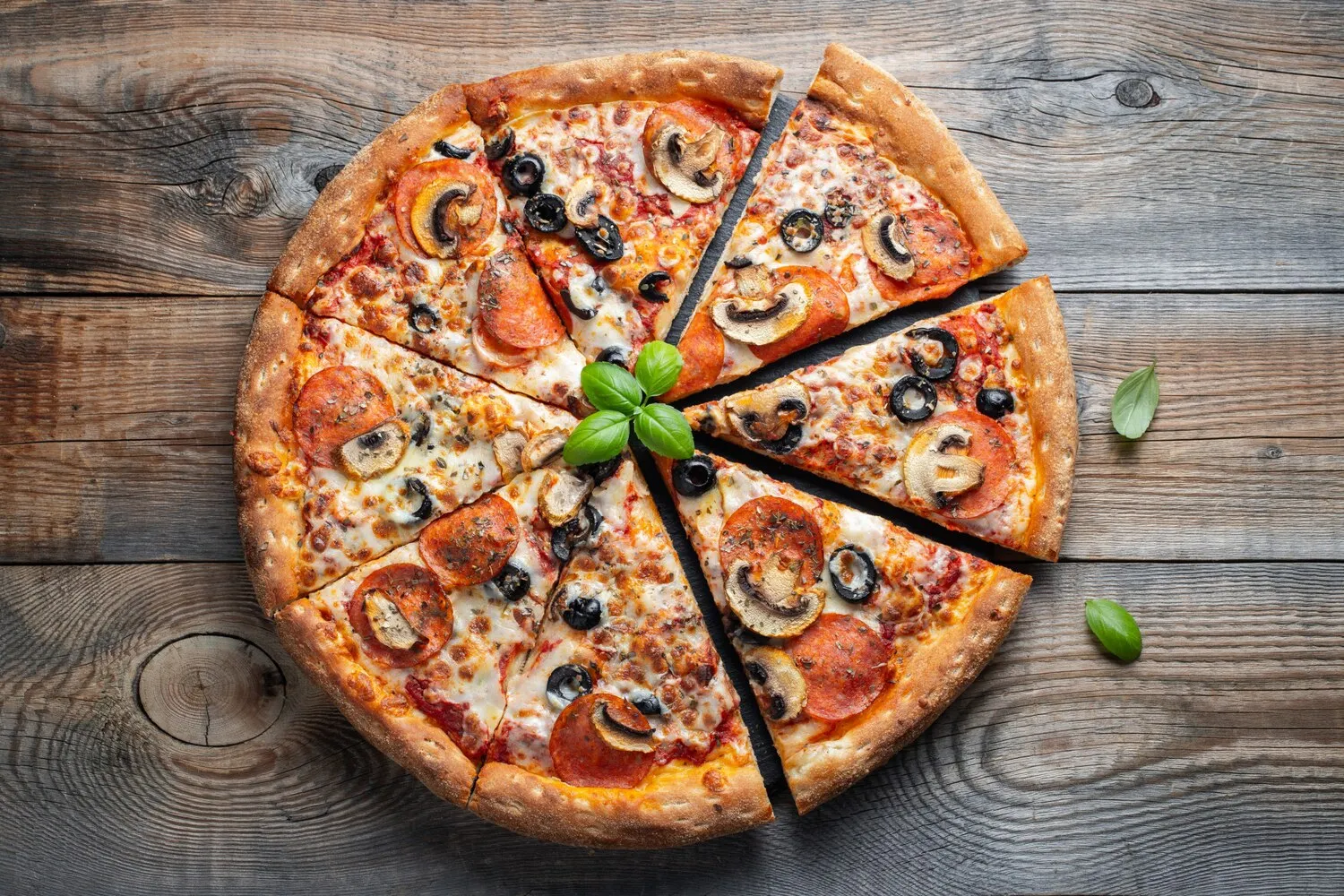
Pizza
Pizza is available at Imbiss by Drini
Nutrition Facts
* The % Daily Value (DV) tells you how much a nutrient in a serving of food contributes to a daily diet. 2,000 calories a day is used for general nutrition advice.
Pizza's ancestry can be traced back to ancient civilizations that used flatbreads as a staple food. Variations existed in ancient Greece, Rome, and Egypt. However, the modern pizza as we know it originated in Naples, Italy, in the 18th or early 19th century.
Pizza has transcended its Neapolitan origins to become a global culinary phenomenon, deeply embedded in the culture of countless countries. It's a symbol of comfort, sharing, and communal eating.
A Food for Sharing
Pizza is often enjoyed in a social setting, making it a symbol of camaraderie and celebration. It's perfect for family gatherings, parties, or casual get-togethers.
Regional Variations
While Italian pizza remains iconic, regional variations have emerged worldwide, reflecting local tastes and ingredients. From Chicago's deep-dish to New York's foldable slices, pizza has adapted to diverse culinary landscapes.
Pizza as Comfort Food
For many, pizza is a quintessential comfort food, evoking feelings of nostalgia and satisfaction. Its simple yet satisfying combination of flavors makes it a go-to choice for a quick and easy meal.
Pizza offers a symphony of flavors, typically blending savory, tangy, and sometimes sweet notes depending on the toppings. The base flavor is often a balance of the dough, tomato sauce, and cheese.
The foundational flavors of pizza come from the slightly sweet and yeasty dough, the acidic and herbaceous tomato sauce (often seasoned with garlic, oregano, and basil), and the creamy, salty cheese (typically mozzarella). Additional flavors depend entirely on the toppings used, which can range from salty meats like pepperoni and prosciutto to vegetables like mushrooms, peppers, and onions. Herbs and spices, as well as cheeses with stronger profiles such as parmesan or gorgonzola, can add depth and complexity.
Dough Preparation
Using high-quality flour and allowing the dough to ferment properly (ideally with a cold fermentation process) will result in a more flavorful and digestible crust.
Sauce Simplicity
A simple, high-quality tomato sauce made with San Marzano tomatoes, garlic, basil, and olive oil is often the best base. Avoid overly processed or sugary sauces.
Cheese Quality
Fresh, whole-milk mozzarella, ideally made with buffalo milk (mozzarella di bufala), offers the best flavor and melt. Consider using a blend of cheeses for added complexity.
Topping Balance
Avoid overloading the pizza with toppings. A well-balanced pizza allows each ingredient to shine without overwhelming the crust.
Oven Temperature
A very hot oven (ideally 450-500°F or higher) is essential for achieving a crispy crust and perfectly melted cheese. A pizza stone or steel can help distribute heat evenly.
Explore additional Pizza dishes and restaurants
Explore PizzaDiscover top dining spots and culinary experiences in Bolzano.
Explore BolzanoLearn more about the food culture, restaurant scene, and culinary heritage of Italy.
Explore Italy